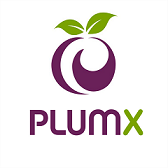Effects of Water Scarcity on the Livelihoods of Rural Women in Tharaka North and Maara Sub-Counties, Tharaka Nithi County, Kenya
Abstract
Water is critical for rural development, poverty alleviation, and agricultural productivity. However, its availability in some regions is limited, threatening the livelihoods of millions of rural households. In Tharaka Nithi County, water scarcity undermines household welfare and perpetuates poverty by constraining agricultural production, increasing women’s workloads and reducing their economic opportunities, and eroding community resilience. This study investigated the impacts of water scarcity on women’s livelihoods in Tharaka North and Maara Sub-Counties, Tharaka Nithi County, Kenya. Data were collected between May and August 2023, during the long dry season when water shortages are most acute. A total of 313 respondents were surveyed, 113 from Tharaka North Sub-County and 200 from Maara Sub-County. Focus group discussions, key informant interviews, direct field observations, and GIS mapping of water sources were also carried out. Quantitative data were analysed using SPSS 26, while qualitative data were subjected to thematic analysis. It was established that water scarcity led to decreased income (Tharaka North: χ2 = 32.35, p < 0.05; Maara: χ2 = 41.95, p < 0.05) and reduced agricultural productivity and income opportunities (Tharaka North: χ² = 32.35, p < 0.05; Maara: χ² = 41.95, p < 0.05). Women face increased burden in water collection, reduced time for productive and educational activities, compromised health, and diminished resilience to climate shocks. The study concludes that water scarcity in Tharaka Nithi County is both an environmental challenge and a driver of entrenched poverty and gender inequality. Integrated interventions, such as investment in climate-resilient water infrastructure, community-based water management, poverty reduction programs, and dismantling of cultural barriers that limit women’s agency, could help fix the issue. Strengthening women’s participation in water governance and promoting affordable technologies like sand dams, aquifer recharge, and household water storage systems are essential steps toward equitable and sustainable water access
Downloads
References
Abubakar, I. R. (2018). Strategies for coping with inadequate domestic water supply in Abuja, Nigeria. Water International, 43(5), 570–590. https://doi.org/10.1080/02508060.2018.1490862
Almanasreh, E., Moles, R., & Chen, T. F. (2019). Evaluation of methods used for estimating content validity. Research in Social and Administrative Pharmacy, 15(2), 214–221. https://doi.org/10.1016/j.sapharm.2018.03.066
Amusan, L., & Olutola, O. (2017a). Climate change, water crisis, and women’s rights in Africa: The case of South Africa. Journal of African Union Studies, 6(1), 73–93.
Amusan, L., & Olutola, O. (2017b). Women and water management in rural Africa: Policy implications. Gender and Development Journal, 25(3), 389–402.
Balaram, V., Copia, L., Kumar, U. S., Miller, J., & Chidambaram, S. (2023). Pollution of water resources and application of ICP-MS techniques for monitoring and management – A comprehensive review. Geosystems and Geoenvironmental, 2(4), 1–17. https://doi.org/10.1016/j.geogeo.2023.100210
Baumgartner, T., & Pahl-Wostl, C. (2013). UN-Water and its role in global water governance. Ecology and Society, 18(3), 1-13.
Bhat, M. A., Dar, T., Ahmed, R., Khurshid, Z., & Nisa, F. U. (2025). Water footprint for sustainable practices. Water Footprints, 33–63. https://doi.org/10.1016/b978-0-443-30054-7.00013-6
Bimla, A., Gandhi, S., Dilbaghi, M., & Raina, K. (2013). Rural women carry the load of fetching water. The Indian Journal of Social Work, 64(1), 65– 75. https://www.researchgate.net/publication/292230792 Rural women carry the load of fetching water
Bisung, E., & Elliott, S. J. (2016). “Everyone is exhausted and frustrated”: exploring psychosocial impacts of the lack of access to safe water and adequate sanitation in Usoma, Kenya. Journal of Water, Sanitation and Hygiene for Development, 6(2), 205–214. https://doi.org/10.2166/washdev.2016.122
Bisung, E., & Elliott, S. J. (2016). Psychosocial impacts of the lack of access to water and sanitation in low- and middle-income countries: A scoping review. Journal of Water and Health, 15(1), 17–30.
Bisung, E., & Elliott, S. J. (2017). “Everyone is exhausted and frustrated”: Exploring psychosocial impacts of water insecurity on women in rural Kenya. Journal of Rural Studies, 58, 52–62.
Boretti, A., & Rosa, L. (2019). Reassessing the projections of the World Water Development Report. Nature Partner Journals Clean Water, 2(15), 1–6.
Brewis, A., Workman, C., Wutich, A., Jepson, W., Young, S., & Staddon, C. (2021). Household water insecurity is strongly associated with food insecurity: Evidence from 27 sites in low- and middle-income countries. American Journal of Human Biology, 33(3), e23505.
Bujang, M. A., Omar, E. D., & Baharum, N. A. (2018). A review on sample size determination for Cronbach’s alpha test: A simple guide for researchers. Malaysian Journal of Medical Sciences, 25(6), 85–99. https://doi.org/10.21315/mjms2018.25.6.9
Bukachi, S. A., Omuto, C., & Njue, E. (2021a). Water security in Kenya: Addressing challenges and opportunities. Kenya Water Institute Journal, 6(1), 25–39.
Bukachi, S. A., Onyango, L., & Omolo, N. A. (2021b). Gendered access to water and adaptation to climate change in Kenya. Climate and Development, 13(8), 664–673.
Bukachi, S. A., Wambua, P. K., & Mwangi, M. (2021c). Water governance and household water security in arid and semi-arid regions of Kenya. Water Policy, 23(6), 1465–1482.
Collins, S. M., Boateng, G. O., & Young, S. L. (2018). Progress in household water insecurity metrics: A cross-disciplinary approach. WIREs Water, 4(3), e1214. https://doi.org/10.1002/wat2.1214
Cosgrove, W. J., & Loucks, D. P. (2015). Water management: Current and future challenges and research directions. Water Resources Research, 51(6), 4823– 4839. https://doi.org/10.1002/2014wr016869
De Guzman, K., Stone, G., Yang, A. R., Schaffer, K. E., Lo, S., Kojok, R., Kirkpatrick, C. R., Del Pozo, A. G., Le, T. T., DePledge, L., Frost, E. L., & Kayser, G. L. (2023). Drinking water and the implications for gender equity and empowerment: A systematic review of qualitative and quantitative evidence. International Journal of Hygiene and Environmental Health, 247(1), 1–19. https://doi.org/10.1016/j.ijheh.2022.114044
Food and Agriculture Organisation of the United Nations (FAO). (2016). Women, agriculture and rural development: A synthesis report. FAO.
Geere, J. L., & Cortobius, M. (2017). Who carries the weight of water? Fetching water in rural and urban areas and the implications for water security. Water Alternatives, 10(2), 513–540.
Goswami, K. B., & Bishit, P. S. (2017). The role of water resources in socio-economic development. International Journal for Research in Applied Science & Engineering Technology (IJRASET), 5(12), 1669– 1674. https://www.researchgate.net/publication/379002667 The Role of Water Resources in Socio-Economic Development.
Haque, A., & Ishtiaque, A. (2020). Water, flood management and water security under a changing climate. Springer Nature.
Jian, F. (2025). The global water crisis: Challenges and solutions for a sustainable future. Hydrology: Current Research, 16(1), 562-563.
KNBS. (2019). Analytical report on urbanization in Kenya. https://www.knbs.or.ke/wp- content/uploads/2023/09/2019-Kenya-population-and-Housing-Census-Analytical-Report-on-Urbanization.pdf
Lin, L., Yang, H., & Xu, X. (2022). Effects of water pollution on human health and disease heterogeneity: A review. Frontiers in Environmental Science, 10(1), 1–16. https://www.frontiersin.org/journals/environmental science/articles/10.3389/fenvs. 2022.880246/full
Lombe, P., Carvalho, E., & Rosa-Santos, P. (2024). Drought dynamics in Sub-Saharan Africa: Impacts and adaptation strategies. Sustainability, 16(22), 1– 16. https://doi.org/10.3390/su16229902
Mwirigi, P., Jane, K., & Karienye, D. (2024). The impact of water abstraction on River Mutonga discharge over the last 30 years. Asian Journal of Geographical Research, 7(1), 58–68. https://doi.org/10.9734/ajgr/2024/v7i1214
Ngetich, F. K., Mairura, F. S., Musafiri, C. M., Kiboi, M. N., & Shisanya, C. A. (2022). Smallholders’ coping strategies in response to climate variability in semi-arid agro-ecozones of Upper Eastern Kenya. Social Sciences & Humanities Open, 6(1), 100319. https://doi.org/10.1016/j.ssaho.2022.100319
Ngigi, S. N. (2003) Rain water harvesting for improved food security. Promoting technologies in the Greater Horn of Africa. Greater Horn of Africa Rainwater Partnership (GHARP). Kenya Rainwater Association (KRA).
Nkonya, E., Minnick, A., Ng’ang’a, E., & Woelcke, J. (2018). Land and natural resources degradation in the arid and semi-arid lands in Kenya. World Bank. https://documents1.worldbank.org/curated/en/461701571216895387/pdf/Land-and-Natural-Resource-Degradation-in-Arid-and-Semi-Arid-Lands-in-Kenya.pdf
Omer, S. (2025, March 6). Global water crisis: Facts, FAQs, and how to help. World Vision. https://www.worldvision.org/clean-water-news-stories/global-water-crisis-facts
Otieno, J. O. (2024). The contribution of institutional governance to water services. In the University of Nairobi. https://erepository.uonbi.ac.ke/bitstream/handle/11295/166734/Otieno%20J_The%20Contribution%20of%20Institutional%20Governance%20to%20Water%20Services%20Delivery%20in%20Kenya.pdf?sequence=1
Park, H. S., Dailey, R., & Lemus, D. (2002). The use of exploratory factor analysis and principal components analysis in communication research. Human Communication Research, 28(4), 562–577. https://doi.org/10.1111/j.1468-2958.2002.tb00824.x
Praveena, S. M., Shaifuddin, S. N. M., & Akizuki, S. (2018). Exploration of microplastics from personal care and cosmetic products and their estimated emissions to the marine environment: Evidence from Malaysia. Marine Pollution Bulletin, 136(1), 135– 140. https://doi.org/10.1016/j.marpolbul.2018.09.012
Rana, S. S., & Chopra, P. (2013). Integrated farming system. Department of Agronomy. https://doi.org/10.13140/rg.2.2.32107.75047
Rosińska, W., Jurasz, J., Przestrzelska, K., Wartalska, K., & Kaźmierczak, B. (2024). Climate change’s ripple effect on water supply systems and the water-energy nexus – A review. Water Resources and Industry, 32, 100266. https://doi.org/10.1016/j.wri.2024.100266
Sultana, A. (2012). Patriarchy and women’s subordination: A theoretical analysis. Arts Faculty Journal, 4(4), 1– 18. https://banglajol.info/index.php/AFJ/article/view/12929
Tharaka Nithi County Government. (2023). Tharaka Nithi County Integrated Development Plan 2023-2027. Kippra. or. Ke, County Government of Tharaka Nithi. https://repository.kippra.or.ke/items/c543240b-e3df-4e4d-ae59-48e0aa6ad659
Truelove, Y. (2011). (Re-) Conceptualizing water inequality in Delhi, India through a feminist political ecology framework. Geoforum, 42(2), 143–152.
United Nations Women (UN Women). (2014). World survey on the role of women in development: Gender equality and sustainable development. UN Women.
Were, E., Swallow, B., & Roy, J. (2006). Water, women, and local social organisation in the Western Kenya highlands. International Research Workshop on Gender and Collective Action. https://www.researchgate.net/publication/5057185_Water_women_and_local_social_organization_in_the_Western_Kenya_highlands
World Health Organisation (WHO) & UNICEF. (2019). Progress on household drinking water, sanitation and hygiene 2000–2017: Special focus on inequalities. WHO/UNICEF Joint Monitoring Programme.
Zuin, V., Ortolano, L., & Davis, J. (2013). The entrepreneurship myth in small-scale service provision: Water resale in Maputo, Mozambique. Journal of Water, Sanitation and Hygiene for Development, 4(2), 281–292. https://doi.org/10.2166/washdev.2013.065
Copyright (c) 2025 Emmanuel Ngoci Kiboro, Marciano Mutiga, PhD, James Muchoka, PhD

This work is licensed under a Creative Commons Attribution 4.0 International License.




























